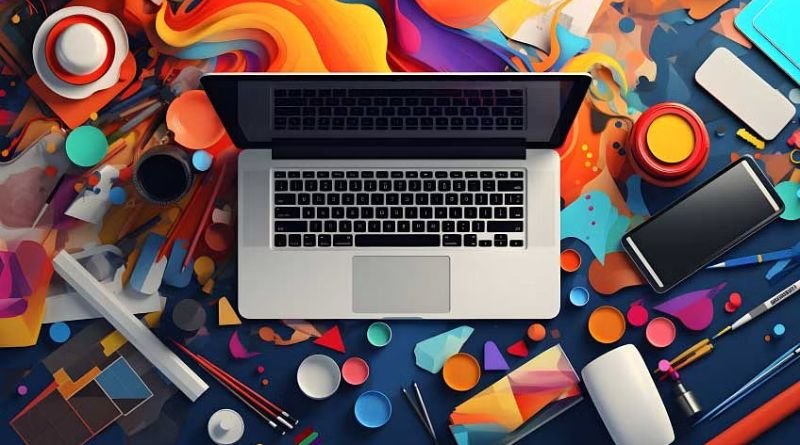Graphic design is an ever-evolving field, constantly shaped by technological advancements, cultural shifts, and changing consumer preferences. As we look forward to 2024, several emerging trends are set to redefine the landscape of graphic design. These trends reflect not only the aesthetic preferences of the time but also the broader shifts in how we communicate and interact with the digital world.
Table of Contents
1. AI-Powered Design Tools
Artificial intelligence (AI) continues to revolutionize the creative process in graphic design. In 2024, AI-powered design tools will become even more sophisticated, offering designers enhanced capabilities such as automated layouts, intelligent color palettes, and instant mockups. These tools will not only speed up the design process but also allow for more personalized and data-driven design solutions. While AI won’t replace human creativity, it will serve as a powerful assistant, helping designers to experiment and innovate more freely.
2. 3D and Immersive Design
With the rise of virtual reality (VR) and augmented reality (AR), 3D design is becoming increasingly popular. In 2024, we can expect to see more graphic designs incorporating 3D elements, creating immersive experiences that blur the line between the physical and digital worlds. This trend will be particularly evident in advertising, web design, and product packaging, where brands seek to engage audiences with dynamic, interactive visuals.
3. Sustainable and Eco-Conscious Design
As global awareness of environmental issues grows, sustainability will become a central focus in graphic design. Designers in 2024 will increasingly prioritize eco-friendly materials, energy-efficient digital practices, and designs that promote sustainability. This trend will manifest in the use of earth tones, natural textures, and minimalist designs that reduce waste. Additionally, brands will be more transparent about their sustainability efforts, with designers playing a key role in communicating these values through visual storytelling.
4. Bold Typography
Typography is set to take center stage in 2024, with designers experimenting with bold, expressive typefaces that command attention. Oversized fonts, custom typefaces, and kinetic typography (animated text) will be popular choices for brands looking to make a statement. This trend reflects a broader move towards simplicity and clarity in design, where strong typography serves as the primary visual element.
5. Maximalism
While minimalism has dominated design trends for years, 2024 will see a resurgence of maximalism—designs characterized by rich colors, intricate patterns, and eclectic compositions. Maximalism embraces complexity and visual richness, allowing designers to explore more elaborate and detailed aesthetics. This trend will be particularly popular in branding and packaging, where brands can express their identity through vibrant, layered designs.
6. Inclusive Design
Inclusive design will continue to gain importance in 2024, as designers strive to create visuals that resonate with diverse audiences. This involves considering various cultural, social, and physical perspectives when designing. We’ll see more representation in imagery, color palettes that cater to different cultural meanings, and design elements that are accessible to people with disabilities. Inclusive design not only broadens a brand’s reach but also fosters a sense of belonging among all users.
7. Micro-Interactions and Animation
Subtle animations and micro-interactions will play a larger role in web and app design, enhancing user experience by making digital interfaces more engaging and intuitive. These small design elements—such as hover effects, loading animations, or button responses—add a layer of interactivity that can delight users and make interactions with a brand more memorable.
8. Augmented Reality (AR) Integration
AR is becoming a game-changer in graphic design, particularly in branding and advertising. In 2024, more brands will incorporate AR into their designs, offering users interactive experiences that bridge the physical and digital worlds. This could include AR-enhanced product packaging, interactive ads, or virtual try-ons. As AR technology becomes more accessible, designers will have new opportunities to create innovative and engaging content.
9. Neon and Metallic Color Schemes
Bright, neon colors and metallic finishes are making a comeback, adding a futuristic and bold vibe to graphic design. These vibrant color schemes will be prominent in 2024, especially in digital media, where they can create striking contrasts and draw attention. Paired with minimalist layouts or 3D elements, these colors will help brands stand out in a crowded market.
10. Personalization and Customization
As consumers increasingly seek personalized experiences, graphic design will follow suit by offering more customization options. Whether through dynamic logos, customizable packaging, or personalized content, design in 2024 will cater to individual preferences and create more tailored brand experiences. This trend will be driven by data and AI, allowing designers to create visuals that adapt to the needs and desires of each user.
FAQs
Q: How will AI impact the role of graphic designers?
A: AI will serve as a tool that enhances the creative process, automating repetitive tasks and offering data-driven insights. While AI can assist in design, it won’t replace the need for human creativity and intuition.
Q: What is inclusive design, and why is it important?
A: Inclusive design is the practice of creating visuals that consider the diverse needs and perspectives of all users, including those with disabilities or from different cultural backgrounds. It ensures that design is accessible and resonant for a broader audience.
Q: How can brands incorporate sustainability into their graphic design?
A: Brands can use eco-friendly materials, minimize waste in production, and design with sustainability in mind—such as using minimalist packaging or promoting green initiatives through visual storytelling.
Q: Why is 3D design becoming more popular?
A: 3D design allows for more immersive and interactive visuals, which are increasingly important in digital media and advertising. As technology advances, 3D elements can create engaging experiences that capture audience attention.
Q: What is maximalism in graphic design?
A: Maximalism is a design trend characterized by bold colors, intricate patterns, and elaborate compositions. It contrasts with minimalism by embracing visual richness and complexity.
As we move through 2024, these trends will shape the future of graphic design, reflecting broader cultural shifts and technological advancements. By staying ahead of these trends, designers can create innovative, engaging, and relevant visuals that resonate with today’s audiences.

